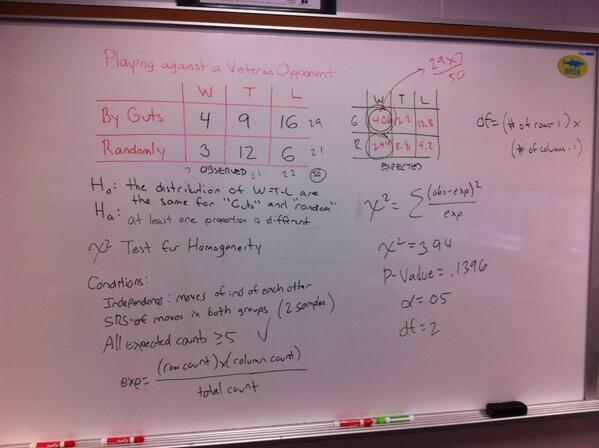This is a busy stretch in my school year. My 2 Prob/Stat classes are nearing the end of new material with PA Keystone Exams in Algebra 1 looming. For my College Prep class, about half have not yet taken the Keystone while the rest took it last year as 8th graders. In Academic, all students will take the Keystone in May. Combine this with my AP Stats class taking their final exam this week, with the AP Exam next week, and my track and field meet responsibilities building as the season reaches its peak; it’s a hectic time of year.
In both of my Prob/Stat classes, we are beginning unit on polynomials. The Prob/Stat class is a course we offer between Algebra 1 and 2. While the course contains much Prob/Stat material, we also clean up some concepts from algebra. Unlike other algebraic units like systems of equations where there are many rich examples and opportunities to differentiate, the start of a polynomials unit often feels static. Here are two activities I have used this week for Laws of Exponents and GCFs/LCM’s.
LAWS OF EXPONENTS – TRUE/FALSE GROUPS
This activity worked equally well in my college-prep group (for whom this was review material), and my academic group (where this was mostly new). The file below contains 16 cards with numeric statements. Break your class into teams of 2, 3 or 4. The job of the group is to identify the true statements and the false statements. For this activity I banned all calculators.
The letters on the cards are not anything the kids need to worry about, but allow me to easily check progress. The cards with vowels are all the false statements.
I was surprised at how much trouble my college-prep group had with building the correct false pile. To reach some consensus on the false pile, I asked every group to hold up one card they knew to be absolutely, positively false. Many groups mistakenly agreed that any number raised to the zero power was worth zero, which led to a class argument on who was right.
Tomorrow, we will look more closely at the falses. In the file above, note that the cards are arranged in groups of 4. In the first group, we will review the addition rules for exponents; then the subtraction rule in the next group of 4; then the multiplication rule for the next group. In the end, this felt much more satisfying, with increased engagement and peer discussion than simply listing rules on the board.
GCFs and LCMs SPEED DATING
The speed dating concept is one many math teachers have stolen from the great Kate Nowack, and it worked perfectly in my Academic class to work through greatest common factors and least common multiples. After doing just one example on the board, desks were arranged into a pairs facing each other, down one long row.

All students were given a card with a monomial. They then worked with their partner facing them, and found the GCF of the two monomials. The first time around, my co-teacher and I provided help to just about all groups. After teams found their GCF’s, all students on the right-hand side stood and moved down one seat and worked with their new partner. There were so many plusses to this activity:
- all students were repsonsible for their own monomial
- all students were engaged: no hiding behind a worksheet
- students worked together, and with different partners each time
Some of the cards I handed out are shown here. I tried to have a variety of cards which clearly shared factors, with different powers of x and y.

I was very impressed with how my class performed on this activity, and we moved onto a second round where LCM’s were found. This time I had students trade cards, and the left-hand side shifted down each time.
Let your kids work together, discuss and find patterns – the notes then write themselves.
